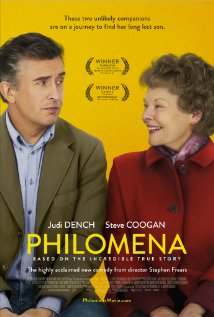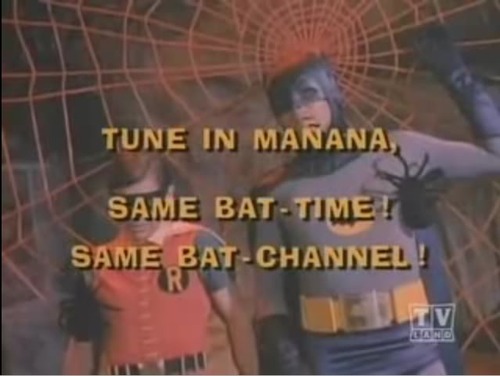Oscar Bait 3.0 (Dallas Buyers Club)
 As far as the Academy is concerned, it’s pretty well known that certain roles and issues are shoe-ins for gaining attention from voters. Social causes pique their interests, especially if they involve some sort of controversy, but not too much, of course. Paired with a good marketing campaign (for the Academy, that is, not necessarily for the public), throw in a couple stars looking to get into the spotlight or be taken “seriously” as performers to add star power and help at the box office, and you might garner some attention, regardless of the accuracy of the story you’re presenting.
As far as the Academy is concerned, it’s pretty well known that certain roles and issues are shoe-ins for gaining attention from voters. Social causes pique their interests, especially if they involve some sort of controversy, but not too much, of course. Paired with a good marketing campaign (for the Academy, that is, not necessarily for the public), throw in a couple stars looking to get into the spotlight or be taken “seriously” as performers to add star power and help at the box office, and you might garner some attention, regardless of the accuracy of the story you’re presenting.
“Dallas Buyers Club” is (loosely) based on the life of Ron Woodroof, a Texas man who was a key figure during the AIDS epidemic in the mid-80s. According to the film, he was homophobic, straight-as-an-arrow and plenty feisty and represented by Matthew McConaughey. His doctor diagnoses him with AIDS and tells him he has 30 days to live. Since he’s straight and the AIDS is the “gay disease,” he initially scoffs at even the thought that he could have it. But then he realizes he is very unwell, and since he’s been with more women than he could count (by the time he’s diagnosed in the film, two of them … at the same time), perhaps his doctors could be right. So, he pairs up with a trans woman (Jared Leto) and fights the government over being allowed to use alternative medicines to treat his disease. Eventually, he decides that the gays aren’t so bad after all. He creates a buyers club for AIDS afflicted gay men to get the medicine they need to cope with their disease, because the FDA sure isn’t helping. By the end of the movie, they’re so grateful to him, they give him a standing ovation worthy of Oskar Schindler.
The more one learns about the AIDS epidemic and Woodroof’s life, the more one understands just how loosely the movie represents both.
For starters, Woodroof wasn’t at all homophobic. According to people who knew him, he was likely bisexual, or at least certainly had a sexual attraction toward men. The buyers clubs were a real thing, but they were mostly started by members of the gay community. These two facts make the film quite disappointing, especially for the LGBT community. It straightwashes a hero from an important era in history and strips the credit for the buyers clubs from that community to put it in the back pockets of straight people.
Another major point of the movie was Woodroof’s fight with the FDA over treatment for the disease. The film purports that AZT, the earliest drug used to help treat AIDS, was completely poisonous and actively led to patients’ deaths. The evil FDA dragged its feet in its treatment of AIDS patients, and prevented the regulation of other drugs that were more helpful in fighting the disease in the U.S., even though those drugs were readily available in other countries. According to people who were actually involved in this whole process say that this isn’t really an accurate depiction of the climate of the day. They say that the FDA was actively working with the gay community, which up until that point, that sort of involvement hadn’t been seen before from that government entity. The worry from common people about pharmaceutical companies and shady experimental processes and business practices is not an uncommon one, especially today. With the “anti-vaccination” movement in the U.S. and the rising return of long-dormant diseases, like the mumps and measles, especially in Ohio at the moment, this sort of rhetoric can only serve to rile these people up and stir up more “controversy” and conspiracy theories. Recommended is this panel discussion from Huffington Post, including thoughts from David France, director of the 2012 documentary, “How to Survive a Plague.” Despite the questionable accuracy of Huffington Post in general, the dialogue here is highly informative and well worth a watch if you have any interest in the AIDS epidemic and how the events depicted in “Buyers Club” played out in real life.
Then there’s the controversy surrounding Jared Leto’s portrayal of a fictional trans woman named Rayon, which is plenty problematic. Trans people aren’t often portrayed in a serious light in high-profile Hollywood movies, and in most cases are played for easy, uncreative laughs. It seems that if comedy directors run out of gags, they know they can make jokes about trans people. That sort of thing is lazy, and worse, it damages the trans community’s push for acceptance in society. Though Leto is actually playing a dramatic role here, he still goes so over the top in trying to look and act like a woman, that he just plays into those stereotypes Hollywood bombards audiences with repeatedly. Beyond that, all the characters in the film refer to Rayon as “he” or “him” because it’s the 80s, and people didn’t properly refer to trans people back then because there was no awareness for that community. It’s understandable that this might be done to adhere to the culture of the time, but the message this sends to audiences today is that those people are still to be identified by the sex they were assigned at birth, rather than by their personal identity, because the context of this character’s existence is rather sketchy. Then, at certain points in the film, the character’s assigned sex is heavily referenced. For instance, she dresses in a man’s suit to meet her father, who obviously disapproves of who she is, reminding the audience that, despite being symapthetic, she’s “really a man.” Elsewhere, she’s shown topless, displaying her lack of mammaries to again prod the audience, so as to say, “alright folks, enough games, this is a man, we all know that, you all know that, right?” To top it off, at one point, Woodroof jokes while they’re arguing that he’ll “give you that operation you’ve been wanting” while pointing a gun at her crotch. It’s not only a deplorable joke, but it’s also a reminder that society believes your privates determine your gender identity. If director Jean-Marc Vallée wanted to address trans issues, that’s not necessarily a bad thing, but much more care should have been given in practice, especially when inserting a fictional trans person into a “true story.”
Personally, I’m not the most qualified one to write about trans issues, as I’m supportive of their movement, but I’m cisgender and I’m greatly lacking in education in that area. Here’s a piece by Parker Marie Malloy that articulates much better than I ever could how the trans community sees Leto’s role in “Dallas Buyers Club.”
In the movie’s defense, it is very technically proficient. McConaughy does a tremendous job portraying the Woodroof he’s told to. Leto himself is a tremendous actor and deserves to be commended for his previous work. Aside from the film changing his sexual orientation and adding in homophobia, Woodroof is purportedly portrayed pretty accurately in some of his hijinks in transporting illegal pharmaceuticals across the border.
But why deviate so far from the real story if is worth telling, as it seems to be? Did the producers believe audiences wouldn’t accept a bisexual protagonist? If they really wanted Oscar bait, they could have just stuck with the original story. If producers wanted to bring trans issues to the surface, there certainly could have been a better way to do so. At least cast a trans actress, as they do exist and could have used the exposure in a high-profile movie like this one. This could have been a breakout role for her. That role is the definition of Oscar bait, as the Academy is heavily drawn toward novelty. As horrible as it is to say, trans issues at this point are still seen as a novelty to Oscar, just as gay or mentally disabled people were 10 and 20 years ago. Those roles were a lock for burgeoning stars to make it to that next level in Hollywood. But Leto was christened as the big money star this time around. Producers must have been thinking that audiences wouldn’t care about an actual trans woman playing a fictional one. Hell, they can’t even accept that the main character is bisexual.
McConaughey is a shooting star in Hollywood at the moment, as he’s removed himself from the chick flicks and started doing quality work over the last few years, and it was time for him to be recognized for his work. An ailing AIDS patient is an effective path to an Academy Award. Leto’s career could probably use a push, and playing a trans woman is a lock for an Oscar. That casting decision screams Oscar bait.
As important as this film should be, considering the subject matter and the current climate of the U.S., and the fact that the movie’s been in development for more than 20 years, and attached to several directors and star actors, it’s an incredible letdown that so many alterations were made to the real story. If you want to make a film about accepting others who are different, then maybe just make it about them and let those who are sympathetic to the cause get their education on those issues from someone who can do a better job of it.
“But it’s a fun movie. They say jokes about the gays that aren’t PC anymore at a time when no one cared,” a counter argument might go.
“Dallas Buyers Club”: Come for the homophobia, leave when it comes to those facty things.











